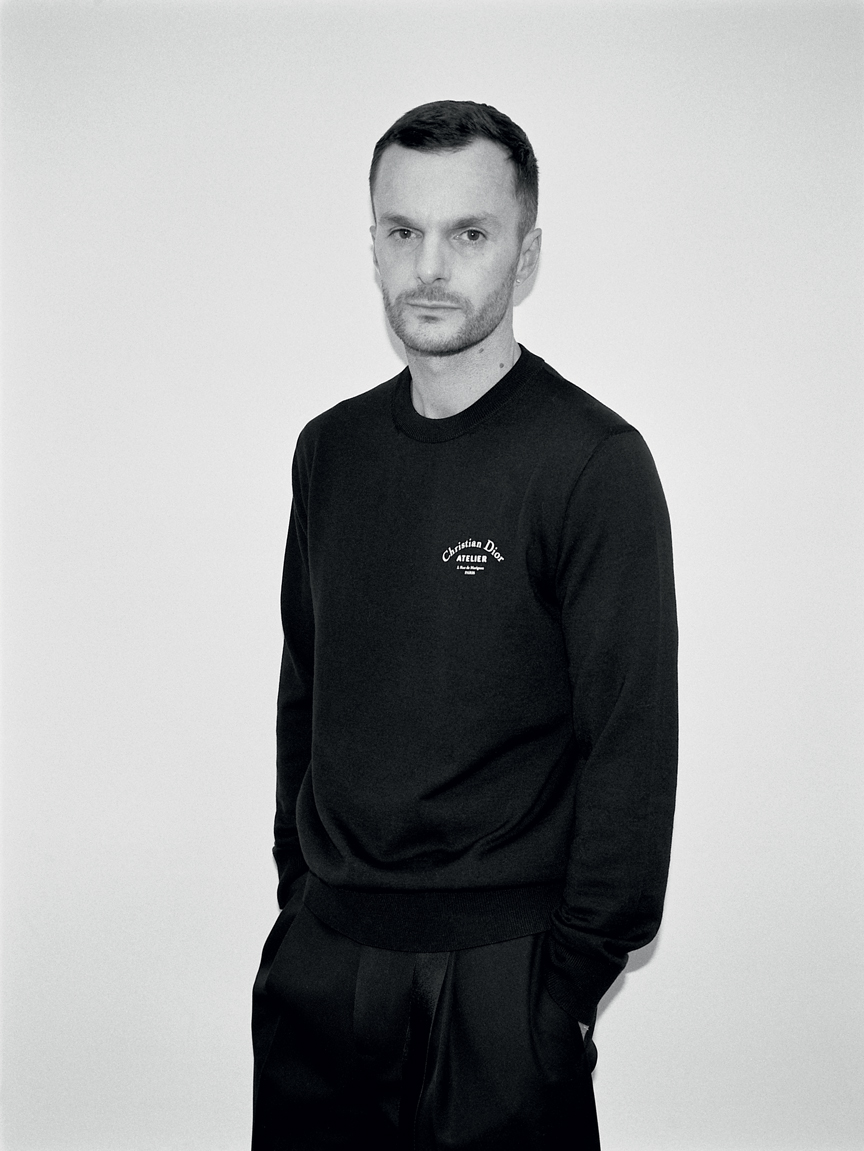Purple Magazine
— Purple 76 Index issue #29 S/S 2018
Assche [van] kris
for dior homme spring / summer 2018
portrait and interview by OLIVIER ZAHM
photography by OLA RINDAL
style by HANNES HETTA
OLIVIER ZAHM — You’ve been at Dior for 10 years now. It’s amazing. How would you describe your decade? What has changed for you since you started out? It seems to me that you’re more and more at ease, and that your collections are getting better and better.
KRIS VAN ASSCHE — That’s nice of you to say! Maybe that’s why I’ve lasted 10 years. I’ve spent the last 10 years growing up. It’d be a real shame if I weren’t learning as I went along because I’ve been working with the ateliers, with some amazing teams, for 10 years. There’s a very artisanal approach to the development of collections here. I’ve had a brand of my own, and I can see the difference. A…
-

WHITE COTTON SERGE DOUBLE-BREASTED ‘SIGNATURE’ JACKET WORN WITH BLACK WOOL OTTOMAN RUNNING SHORTS, A SATIN ‘CHRISTIAN DIOR ATELIER’ NARROW SCARF AND GRAINED CALFSKIN HIGH-TOP SNEAKERS DIOR HOMME
-

METAL SKULL DETAILED ‘CHRISTIAN DIOR ATELIER’ FIBULA ON A WOOL OTTOMAN SLEEVELESS ‘SIGNATURE’ JACKET, RUNNING SHORTS AND NARROW SCARF DIOR HOMME
-

BLACK WOOL SERGE LONG SLEEVELESS JACKET OVER A WHITE STRETCH COTTON POPLIN SLEEVELESS SHIRT DIOR HOMME
-

BLACK WOOL OTTOMAN SLEEVELESS ‘SIGNATURE’ JACKET WITH A WOOL OTTOMAN ‘CHRISTIAN DIOR ATELIER’ TAILORING SCARF DIOR HOMME
